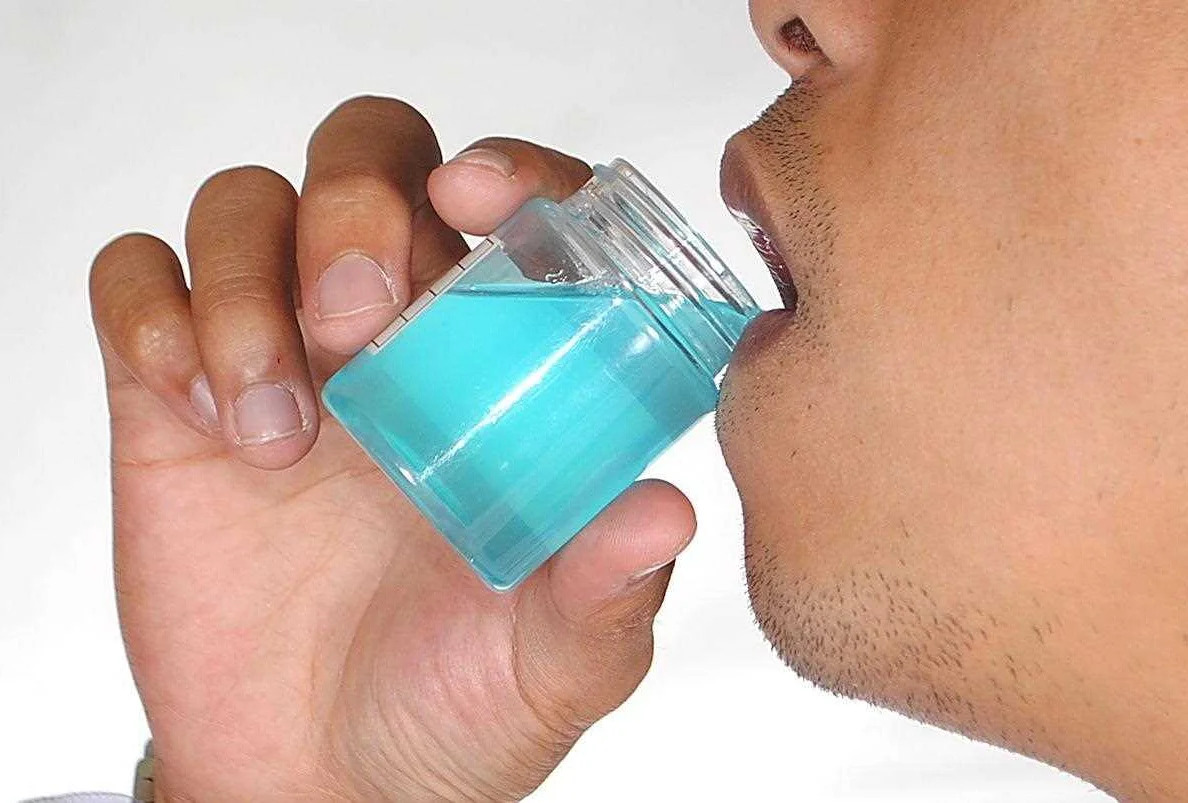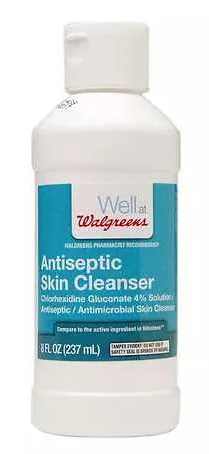FDA warns about the dangers of chlorhexidine
Содержимое
The FDA is warning consumers about the potential dangers of using chlorhexidine, a commonly used antiseptic. Learn about the risks and how to use it safely.
The Food and Drug Administration (FDA) has recently issued a warning about the potential risks associated with the use of chlorhexidine, a common antiseptic used in hospitals and healthcare settings. Chlorhexidine is widely used to prevent infections during surgical procedures and to disinfect medical equipment. However, recent studies have raised concerns about its safety and potential side effects.
The FDA’s warning comes after reports of serious allergic reactions and anaphylaxis in patients who were exposed to chlorhexidine. These reactions can range from mild skin irritation to life-threatening symptoms, including difficulty breathing and rapid heartbeat. It is important for healthcare providers and patients to be aware of these risks and to take appropriate precautions when using chlorhexidine.
While chlorhexidine is an effective antiseptic, the FDA advises healthcare providers to carefully evaluate the risks and benefits of its use in each individual patient. Patients who have a known sensitivity to chlorhexidine or a history of allergic reactions should be particularly cautious. It is also important for healthcare providers to educate patients about the signs and symptoms of an allergic reaction and to seek immediate medical attention if any occur.
FDA Warning: Risks of Chlorhexidine Use

The Food and Drug Administration (FDA) has issued a warning regarding the potential risks associated with the use of chlorhexidine. Chlorhexidine is an antiseptic commonly used in mouthwash, toothpaste, and other oral products, as well as topical solutions used for cleaning wounds. While chlorhexidine is effective in killing bacteria and preventing infections, the FDA has identified certain risks that individuals should be aware of.
One of the main risks associated with chlorhexidine use is an allergic reaction. Some individuals may experience symptoms such as swelling of the face, lips, or tongue, difficulty breathing, or a skin rash. If you experience any of these symptoms after using a product containing chlorhexidine, it is important to seek medical attention immediately.
In addition to allergic reactions, the FDA has also warned about the potential for serious injuries to the skin and mucous membranes when using chlorhexidine. In rare cases, individuals may develop skin ulcers or blisters, or experience severe irritation or burns. These injuries can be painful and may require medical treatment.
Furthermore, the FDA has cautioned against ingesting chlorhexidine-containing products, as this can lead to serious health complications. Swallowing chlorhexidine mouthwash or other oral products can cause difficulty breathing, vomiting, or a drop in blood pressure. Ingestion of chlorhexidine can be particularly dangerous for children, as their smaller size and weight may make them more susceptible to these adverse effects.
To minimize the risks associated with chlorhexidine use, the FDA recommends following the instructions provided on the product label and consulting a healthcare professional if you have any questions or concerns. It is important to be aware of the potential risks of using chlorhexidine and to seek medical attention if you experience any adverse effects.
Potential Dangers of Chlorhexidine
Chlorhexidine is a commonly used antiseptic and disinfectant, but recent warnings from the FDA highlight potential dangers associated with its use.
- Allergic Reactions: Some individuals may experience allergic reactions to chlorhexidine, including skin rashes, swelling, and difficulty breathing. It is important to be aware of these symptoms and seek medical attention if they occur.
- Oral Health Risks: Chlorhexidine is often used in mouthwashes and oral care products, but long-term use can lead to staining of teeth and dental restorations. It may also disrupt the natural balance of oral bacteria, leading to oral health issues such as thrush or an overgrowth of harmful bacteria.
- Wound Healing Problems: While chlorhexidine is commonly used in wound care, there have been reports of delayed wound healing and tissue damage associated with its use. It is important to follow proper wound care protocols and consult a healthcare professional if any concerning symptoms arise.
- Pregnancy and Breastfeeding: The use of chlorhexidine during pregnancy and breastfeeding should be discussed with a healthcare professional. There is limited information on the safety of chlorhexidine in these populations, and caution should be taken to weigh the potential risks versus benefits.
- Drug Interactions: Chlorhexidine can interact with certain medications, such as those used to treat fungal infections or blood thinners. It is important to inform healthcare providers of all medications being taken to avoid potential interactions.
It is crucial to be aware of the potential dangers associated with chlorhexidine and to use it only as directed by a healthcare professional. If you experience any adverse reactions or have concerns about its use, consult a healthcare professional for guidance and support.
FDA Investigation and Findings
The FDA launched an investigation into the risks of using chlorhexidine after receiving reports of adverse reactions from patients and healthcare professionals. The investigation aimed to gather information on the potential side effects and determine if there were any patterns or trends.
During the investigation, the FDA analyzed data from clinical studies, case reports, and adverse event reports. They also consulted with experts in the field and reviewed the existing scientific literature on chlorhexidine use.
Based on their findings, the FDA determined that there were indeed risks associated with using chlorhexidine. These risks included allergic reactions, ranging from mild skin irritation to severe anaphylaxis. Other reported side effects included chemical burns, oral mucosal erosion, and respiratory distress.
The FDA also found that certain patient populations were more susceptible to these adverse reactions. This included individuals with a known allergy to chlorhexidine, as well as those with compromised immune systems or significant mucosal damage.
Furthermore, the investigation revealed that some healthcare professionals were not aware of the potential risks of chlorhexidine or were not following the proper protocols for its use. This lack of awareness and adherence to guidelines contributed to the occurrence of adverse events.
As a result of their investigation and findings, the FDA issued a warning about the risks associated with using chlorhexidine. They recommended that healthcare professionals take necessary precautions when using this antiseptic, including the proper screening of patients for allergies and closely monitoring for any adverse reactions.
The FDA also encouraged healthcare professionals to educate themselves and their staff about the potential risks of chlorhexidine and to ensure they are following the appropriate guidelines for its use. They emphasized the importance of reporting any adverse events to the FDA so that they can continue to monitor the safety of this product.
Health Care Professionals and Chlorhexidine

Chlorhexidine is commonly used in healthcare settings due to its broad-spectrum antimicrobial properties. It is often used as a disinfectant for surgical instruments, as well as a preoperative skin preparation to reduce the risk of surgical site infections. However, the Food and Drug Administration (FDA) has recently issued a warning about the risks associated with chlorhexidine use.
The FDA has received reports of serious allergic reactions and anaphylaxis, including one death, related to chlorhexidine use. These reactions can occur with both topical and oral use of chlorhexidine products. Health care professionals should be aware of the potential risks and take appropriate precautions when using chlorhexidine.
When using chlorhexidine as a skin preparation, it is important to follow the manufacturer’s instructions and use the proper concentration. Health care professionals should also be aware of the patient’s medical history and any known allergies before using chlorhexidine. If a patient has a history of allergic reactions to chlorhexidine or other antiseptics, alternative products should be considered.
In addition to allergic reactions, chlorhexidine can cause skin irritation and contact dermatitis. Health care professionals should monitor patients for signs of skin irritation and discontinue use if necessary. If a patient develops a rash or other signs of an allergic reaction after using chlorhexidine, it is important to seek medical attention immediately.
Health care professionals should also educate patients about the potential risks of chlorhexidine use. Patients should be instructed to discontinue use and seek medical attention if they experience any signs of an allergic reaction or skin irritation. It is important for health care professionals to stay informed about the latest safety information regarding chlorhexidine and other antiseptics.
In conclusion, while chlorhexidine is widely used in healthcare settings, health care professionals should be aware of the risks associated with its use. By following proper protocols, monitoring patients for adverse reactions, and educating patients about potential risks, health care professionals can help ensure the safe use of chlorhexidine in their practice.
Consumer Education and Safety Measures

Consumer education is an important aspect when it comes to ensuring the safety of individuals using chlorhexidine products. The FDA recommends that consumers be aware of the potential risks associated with the use of chlorhexidine and take necessary precautions to minimize these risks.
It is crucial for consumers to carefully read and follow the instructions provided by the manufacturer on the product packaging or label. This includes paying attention to the recommended dosage, frequency of use, and any specific warnings or contraindications outlined by the manufacturer.
Consumers should also be aware of any potential side effects that may occur after using chlorhexidine. These side effects can range from mild irritation to severe allergic reactions. If any adverse reactions are experienced, it is essential to stop using the product and seek medical attention immediately.
In addition to following the manufacturer’s instructions, consumers should be aware of any additional safety precautions recommended by healthcare professionals or regulatory authorities. These measures may include avoiding the use of chlorhexidine on certain parts of the body, such as the eyes or ears, and taking necessary precautions when using chlorhexidine in combination with other medications or medical devices.
Furthermore, consumers should be aware that chlorhexidine should not be ingested or swallowed. It is strictly for external use only. Ingestion of chlorhexidine can lead to serious health consequences.
Overall, it is vital for consumers to educate themselves about the potential risks associated with using chlorhexidine and to take appropriate safety measures. By understanding how to use chlorhexidine correctly and being aware of the potential risks, consumers can help ensure their own safety and well-being.